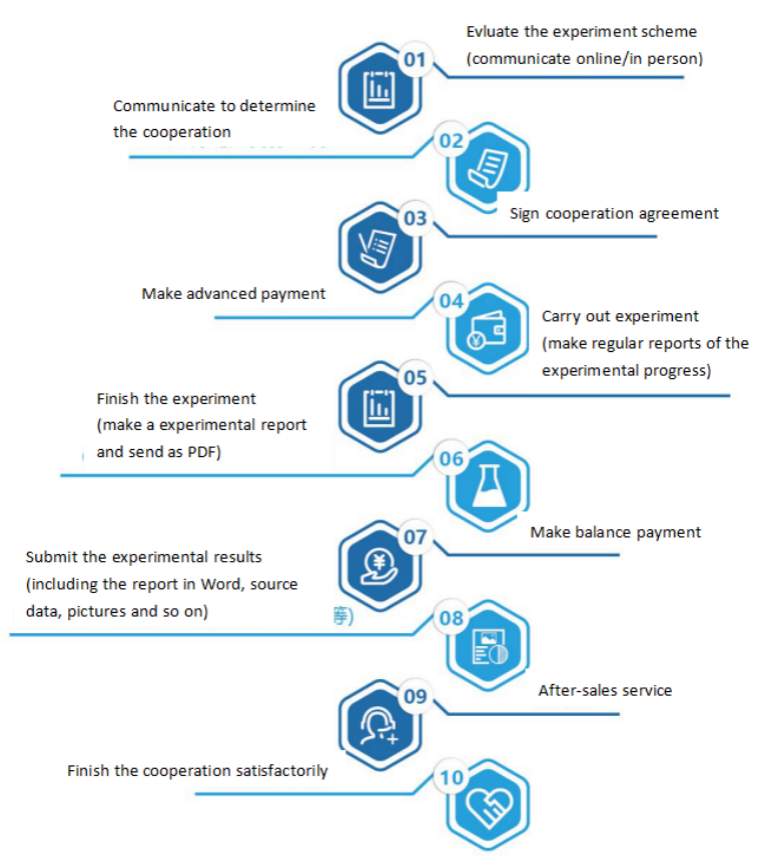One. Morris Water Maze
(1) Experiment Principle
Although mice are natural swimmers, they hate being in the water. At the same time, swimming is a very physical activity for mice. They will instinctively look for a resting place in the water. The behavior of finding a resting place involves a complex memory process, including collecting visual information related to spatial positioning, processing, sorting, memorizing, reinforcing and then taking out these information. The purpose is to successfully navigate and find the station hidden in the water, and finally escape from the water.
The Morris water maze (MWM) experiment is an experiment that forces experimental animals (rats and mice) to swim and learn to find a platform hidden in the water. It is mainly used to test the learning and memory ability of experimental animals on spatial position perception and direction perception (spatial positioning).
(2) Application Introduction
It can be applied to the research of learning and memory, Alzheimer's disease, hippocampal/extrahippocampal research, intelligence and aging, new drug development/screening/evaluation, pharmacology, toxicology, preventive medicine, neurophysiology, animal psychology, behavioral biology, chronobiology and other scientific research and computer-assisted instruction (CAI).
(3) Experiment Method
① Put the animal (rat or mouse) into the water with its head towards the pool wall, and take one of the four starting positions of East, West, South and North at random. Record the time (s) when the animal found the underwater platform. In the previous training, if the time exceeds 60s, guide the animal to the platform. Let the animal stay on the platform for 10s.
② Remove and dry the animals. If necessary, the animals (especially rats) should be roasted under 150W incandescent lamp for 5min and put back into the cage. Each animal is trained 4 times a day, with an interval of 15 ~ 20 minutes between the two trainings, and trained continuously for 5 days.
③ The next day after the last acquired training, remove the platform and start 60s exploration training. Put the animal into the water from the opposite side of the original platform quadrant. The time spent in the target quadrant (the quadrant where the platform is originally placed) and the times of entering the quadrant are recorded as the test index of spatial memory
④ The working memory of animals is measured. The next day after the exploration training, start the 4-day contraposition training. Place the platform in the opposite quadrant of the quadrant where the original platform is located, and the method is the same as that of acquired training. Train four times a day. Record the time to find the platform, swimming distance and swimming speed each time.
(4) Case Display
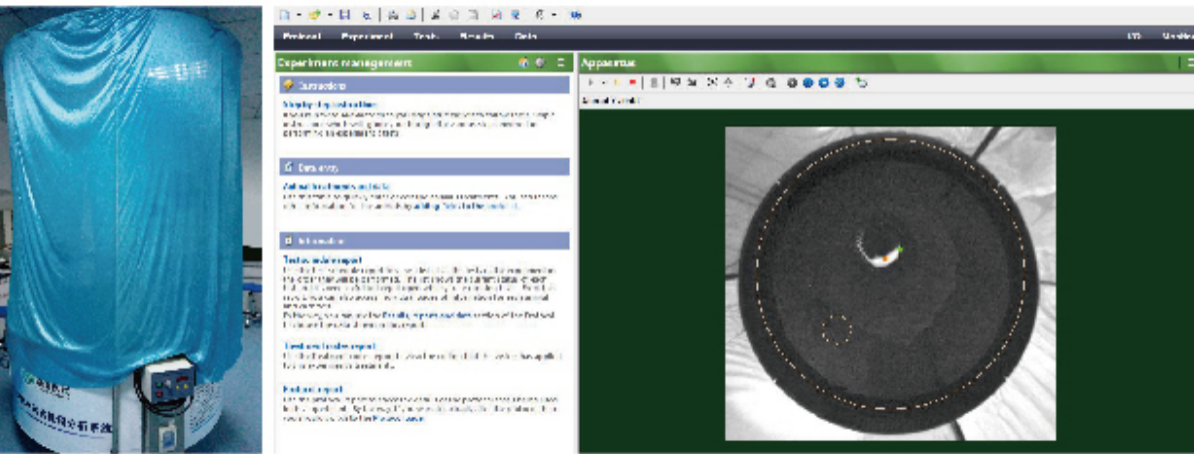
(5) Common Problems
① Compared with food driven models (such as radial arm maze), the biggest advantage of water maze experiment is that animals have greater motivation to escape from the water environment. Moreover, there is no need to fast, which is especially suitable for the testing of elderly animals. In addition, it is particularly sensitive to memory impairment caused by aging. Therefore, water maze is most commonly used in the study of memory of elderly animals.
② Test at a fixed time every day. Avoid unnecessary stress.
③ When compared with other similar experiments, we should pay attention to the effects of various factors such as animal gender, strain, swimming pool size and water temperature on the experimental results. In addition, when taking the swimming speed as the observation index, the possible impact of the animal's weight, age and skeletal muscle development on the swimming speed should be considered.
④ When using old animals for experiments, it should be confirmed that the swimming ability and vision of animals will not affect the behavior and operation due to the increase of age. The method is as follows: raise the platform above the water so that animals can see the platform. After the animal is put into the swimming pool, if it swims directly to the platform without difficulty, it shows that the swimming ability and vision of the animal are normal, and the experiment can be started.
⑤ Swimming is a great stress stimulus to animals, which can cause neuroendocrine changes. These changes may interfere with the experimental results. For elderly animals, it can induce cardiovascular disease and lead to fainting or even sudden death. Therefore, if necessary, animals can be put into the swimming pool for many times or their swimming time can be appropriately extended to increase the adaptability of animals to swimming.
⑥ When the water in the swimming pool is stirred with experimental dyes, the water should be changed regularly to avoid corruption and deterioration.
Two. Animal Treadmill Experiment
(1) Experiment Principle
The animal treadmill experiment mainly uses the animal treadmill to let small rodents do running training, which can replace the traditional swimming training and make the training intensity index more accurate.
(2) Application Introduction
Animal treadmill experiment is one of the necessary means of physical fitness, endurance, sports injury, nutrition, medicine, physiology and pathology.
(3) Experiment Method
In the process of exercise training, closely observe the changes of exercise performance and exercise ability of rats to avoid exercise-induced fatigue. During the experiment, feed the rats, change the water and clean them everyday and weight them and their food intake once a week.
the rats should be fed, watered and cleaned every day, weighed and weighed once a week.
1) Open the software and click the "start setting" button (at this time, the start setting button turns green). At this time, the parameters set last time will be imported.
① Total time: set the total time of the experiment, which can be input directly with the keyboard through the input box in the middle, or adjusted through the leftmost button. The step value is 1 minute.
② Running time: set the running time of animals in the same way as the total time.
③ Rest time: set the rest time of animals in the same way as the total time.
④ Stimulation setting: set the current of electrical stimulation, set it through the left button, and the step value is 0.05mA.
⑤ Select COM port: select the communication port between the serial port line and the computer. The default is COM1.
⑥ Speed setting: adjust the speed, and the step value is 1m/min. Real-time adjustment is supported.
⑦ Sound stimulation: control the presence or absence of sound stimulation, and control it in real time after the beginning of the experiment.
⑧ Light stimulation: control the presence or absence of light stimulation, and control it in real time after the beginning of the experiment.
⑨ Electrical stimulation: control the presence or absence of electrical stimulation, and control it in real time after the beginning of the experiment.
2) After the parameter setting is completed, click the "start experiment" button. At this time, the motor starts, and the data is displayed in the blue area on the right and in the lower right corner in the form of table.
3) The experiment end button can stop the experiment at any time, and it will also stop the experiment when the test time is up.
(4) Case Display

(5) Common Problems
① The purchased rats and mice will first raised adaptively in the living environment in the laboratory for about a week.
② In the second week, the adaptive exercise training on the treadmill will be carried out, and individual rats that always refuse to run should be removed during the formal experiment.
③ During the formal experiment, the researchers set the movement speed and the slope angle of the treadmill to carry out the animal movement treadmill experiment according to the needs of the research project.
Three. The Tail Suspension Test
(1) Experiment Principle
By fixing the tail of the experimental animal to make its head hang downward, the animal struggled desperately in the environment, tries to escape but unable to, thus providing an unavoidable oppressive environment. After a period of experiment, a series of parameters in the process of desperate immobility of the animals in the environment are recorded, and the animals show this typical "immobility state", reflecting what is called "behavioral despair",
The tail suspension test (TST) is a mouse behavior test that can be used to screen potential antidepressants and evaluate experimental methods that are expected to affect depression related behavior.
(2) Application Introduction
This behavioral despair model is similar to depression. It is sensitive to most antidepressants, and its efficacy is significantly related to clinical efficacy, so it is widely used in the primary selection of antidepressants.
(3) Experiment Method
There is a special tail suspension tester, which is mainly used for the research of antidepressants, sedatives and painkillers. The instrument is suitable for rats, mice or other laboratory animals. By fixing the tail of the animal and hanging its head downward, it records a series of parameters in the process of desperate immobility of animals in this environment.
Suspend the mouse on the bracket by fixing the back 1/3 of its tail with adhesive tape. The mouse's head is 15cm away from the background for camera. The camera background is in obvious contrast with the hair color of mice. White mice adopt black background. Stop after 6 minutes of timing. Use small animal behavior analysis software: use Smart 2.5 software to count the immobility time of mice for the latter four minutes (3-6 minutes).
(4) Case Display
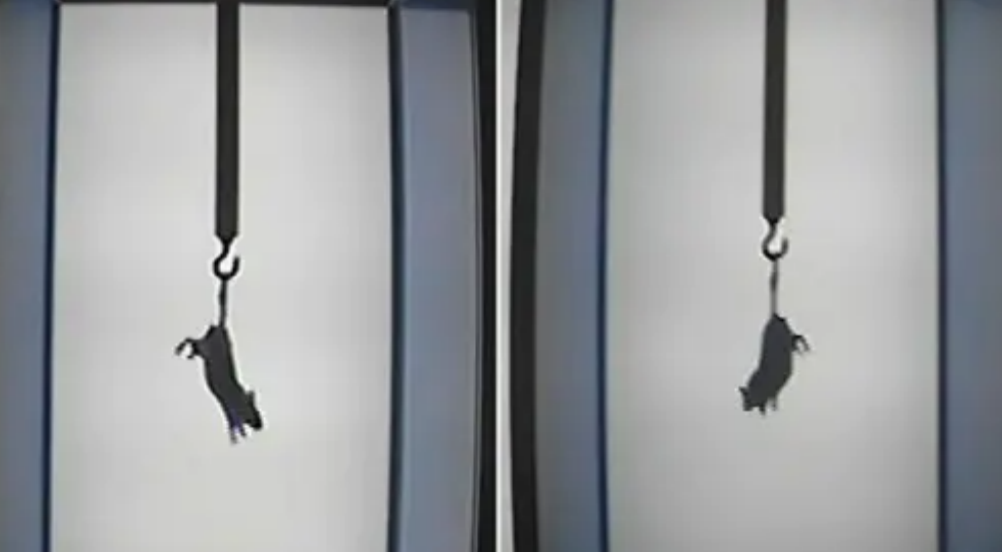
(5) Common Problems
1) Heavy rats are not recommended for TST tail suspension experiment, because rats can only support their weight through their tails, which is painful for rats. Similarly, avoid using abnormally heavy mice (such as mice used to simulate obesity), in which case experimenters should look for alternative tests, such as forced swimming experiments.
2) Animals brought into the experimental environment from the living environment should be adapted for a period of time, usually at least one hour.
3) The experimental environment should be kept quiet. Sudden loud noise will panic mice.
4) When using software analysis, select the background with appropriate contrast: white rats use black background and black rats use white background; You can also choose to use the professional experimental equipment with backlight produced by Shanghai Xinruan Information Technology Co., Ltd; There is no requirement for the color of mice, and high-quality and high contrast experimental videos can be taken.
5) What is the experimental space of each mouse? The reference space is about 55cm high * 15cm wide * 11.5cm. In the multi flux experiment, in order to prevent animals from observing or influencing each other, the middle is separated by a partition; The animals are hung in the middle of the compartment, of which the wide and deep enough not to touch the wall.
6) What is the distance between the nose tip of the animal after hanging and the floor of the equipment? The reference distance is about 20 ~ 25 cm.
7) It is recommended to place a removable tray at the bottom to collect feces or urine.
8) The tape for hanging should be firmly attached to the tail of the mouse and the hanging rod, and should be strong enough to bear the weight of the mouse being tested. However, the tape should not be too sticky because it will be removed from the tail at the end of the experiment. The size of the tape should be uniform, with a length of 17 cm and a mark of 2 cm from one end. This 2 cm part is used to connect the tape to the tail, while the remaining 15 cm is used to hang the mouse; The tape should be pasted on the end of the tail with a distance of 2-3mm.
9) Tail climbing stopper: during the experiment, mice will pursue and climb their own tail, which is a common problem. The solution is simple and very effective: cutting a piece of plastic pipe into a 4 cm long hollow cylinder (about 1.3 cm inner diameter, 1.5 g) and placing it around the mouse tail can prevent this tail crawling behavior. Note that mice that has successfully climbed their tails before using the blocker know that escape is possible. Therefore, such mice should be excluded.
10) Small movements with only forelimb but no hindlimb intervention can be judged as immobility; The swing caused by inertia can be judged as immobility; The Super Tst tail suspension experimental analysis software of Super Series behavioral system developed by Shanghai Xinruan Information Technology Co., Ltd. can identify the animal's head, tail, forelimb, hindlimb, center of gravity and other parts, and accurately distinguish and identify movement and immobility,
11) After the experiment (usually 6 minutes), put the animal back into the cage, gently pull the tape off the tail, and do not tear the tape from the tail to avoid causing pain to the animal;
12) Clean supplies. after each experiment, collect feces and urine, and wipe the suspension box thoroughly.
Four. 8-Arm Maze Experiment
(1) Experiment Principle
8-Arm Maze is used to detect the performance of learning and memory in the state of drug or brain damage. It is composed of eight identical arms, which radiate from a central platform, so it is also called Radial Maze.
There is a food supply device at the end of each arm. According to the analysis of the feeding strategy of animals, that is, the number of times, time, correct times, wrong times, route and other parameters of each arm can reflect the spatial memory ability of experimental animals.
(2) Application Introduction
The 8-Arm Maze is simple and feasible, and can distinguish short-term working memory from long-term reference memory. It has been widely used in the evaluation of cognitive function of learning and memory experiments. The main analysis indexes of ZH-3000 8-Arm Maze are name, grouping, working memory error latency, reference memory error latency, total correct times, total arm entry times, working memory error times, reference memory error times, correct latency, correct rate, working memory error rate, reference memory error rate, correct times before first error, test time, locus, etc.
(3) Experiment Method
1) Weight the animals and fast for 24 hours after they adapting to the experimental environment for 1 week. After that, normal food (16-20g for rats and 2-3g for mice according to different body weight) is given after training every day to keep the body weight at 80% ~ 85% of that of rats fed normally.
2) On the next day, food particles (4-5 grains each, about 3-4mm in diameter) are scattered on each arm and center of the maze. Then, four animals are placed in the center of the maze at the same time (the door leading to each arm is opened), and they are allowed to eat freely and explore for 10 minutes.
3) On the third day, repeat the training of the second day. This process makes animals familiar with the maze environment without strong stress.
4) From the fourth day, the animals are trained individually: one food particle is placed at each arm near the outer end of the food box to allow the animals to eat freely. Take out the animals after eating or 10min.
5) On the fifth day, put the food in the food box and repeat the training of the previous day twice a day.
6) After the sixth day, four arms are randomly selected, and one food particle is placed in each arm; Close each arm door and place the animal in the center of the maze; After 30s, the arm door is opened to allow the animals to move freely in the maze and ingest the food until the animals eat the food particles of all four arms. If the food particles are not finished after 10 minutes, the experiment is terminated.
(4) Case Display
![]()
(5) Common Problems
1) The radial maze equipment and experimental procedures of mice are similar to those of rats, but the maze specification should be 1/4 ~ 1/2 smaller than that of rats, so as not to increase the difficulty of mouse behavior operation.
2) This experiment can also be used only to measure working memory. The only difference in the method is that the food particles are placed in all radiation arms, rather than only four arms.
3) Chronic stress can affect the maze operation of animals, and there are gender differences. After chronic stress, the memory of male rats decreased and the frequency of memory errors increased; On the contrary, the spatial memory of male rats was enhanced, which showed that the frequency of errors was reduced.
4) Even under restricted feeding conditions, rats should be allowed to gain 5g in weight every week to avoid diseases caused by malnutrition. Eliminate animals in poor physical condition.
5) Any object around the maze can be used by animals as a sign of spatial positioning. Removing or moving these signs may make it difficult for animals to operate and reduce the accuracy of maze arm selection.
6) The number of radiation arms can vary according to the purpose of the experiment, including 8, 16, 24, 32, 40 and 48 arm mazes. The fewer maze arms, the smaller the arms that require animals to remember to explore, and the simpler the animal's behavior and operation. On the one hand, increasing the number of arms increases the requirements for animal spatial memory, on the other hand, it also introduces more interference factors that need to be considered (such as the impact of past maze learning on the currently measured memory). Therefore, the 8-arm radial maze is usually used, which can not only reduce unnecessary and excessive arm interference, but also shorten the time spent in training and testing.
7) The food used is usually small, chocolate flavored (one of the favorite flavors of animals) or sweet donut (10mg each); Liquid food (such as chocolate milk or water) can also be used. The latter is particularly useful for testing certain drugs (anticholinergic drugs) that affect animals' swallowing of solid food.
8) There are two main factors affecting the operation of animal maze: the fear of maze or observer, the habit of animal exploration and the drive of food known to be placed in the arms of maze. Too strong fear will prevent the maze operation of animals, making animals always stay in a certain place in the maze without exploring. Lack of appetite for food can produce similar results. Increasing the touch of animals and raising the side wall of maze arms if necessary can help reduce animal fear. If the driving effect of food is insufficient, the amount of food can be reduced, but the weight and general physical condition must be monitored at the same time. Generally, the weight of rats should not be less than 80% before fasting; For most rats, the weight can be reduced by 15%.
9) Unlike the water maze, the radial arm maze is suitable for repeated testing or long-term memory testing. It is generally believed that working memory represents short-term memory and reference memory represents long-term memory.
Five. Rat and Mouse Light and Dark Box (Black and White Box) Experiment
(1)Experiment Principle
Designed by using the habit that mice or rats tend to dark and avoid light. Half of the device is a darkroom and half is a light room, with a small hole connected in the middle. The bottom of the darkroom is covered with an electrified copper grid. Animals are shocked when they enter the darkroom. This experiment is simple and easy to perform. The more reaction boxes, the more animals trained at the same time. Taking the incubation period as the index, the difference of animals is relatively small. It has high sensitivity to memory process, especially memory retrieval.
In the light and dark box, mice or rats like to move in the dark room, but the animal's exploring habit urges them to try to explore the light box. However, the bright light stimulation of the light box inhibited the animal's exploration activities in it.
(2) Application Introduction
It is widely used in scientific research and computer assisted instruction in many disciplines such as learning and memory, Alzheimer's disease, hippocampal/extrahippocampal research, intelligence and aging, new drug development/screening/evaluation, pharmacology, toxicology, preventive medicine, neurobiology, animal psychology and behavioral biology, and has been widely recognized in the world. It is an optimal classical experiment for medical colleges to carry out behavioral research, especially learning and memory research.
(3) Experiment Method
1/3 of the light-dark box (45cm*27cm*27cm) is dark and the top is covered up; 2/3 of the light-dark box is light and is illuminated. There is a 7.5cm * 7.5cm door opening between the two boxes for animals to pass through. The light-dark box is placed on the Animex activity counter, which can record the locomotor activity of animals at the same time. The animals are placed in the center of the light box for a certain time after administration, and the times of penetrating the box and the residence time distributed in the light box and the dark box within 10min are recorded.
Shimada et al. boldly improved the light-dark box in 1995. A 10cm * 10cm * 12cm dark box is installed in the center of a 40cm * 40cm * 12cm plexiglass open box, thus forming the other two diagonal "L" shaped runway (light box). Each dark box has a 3.5cm * 3.5cm opening connected with the runway on both sides. A TV scanning and camera system is installed above the device to observe the number of times of mice passing through the box, residence time in the light box and locomotor activity.
(4) Case Display
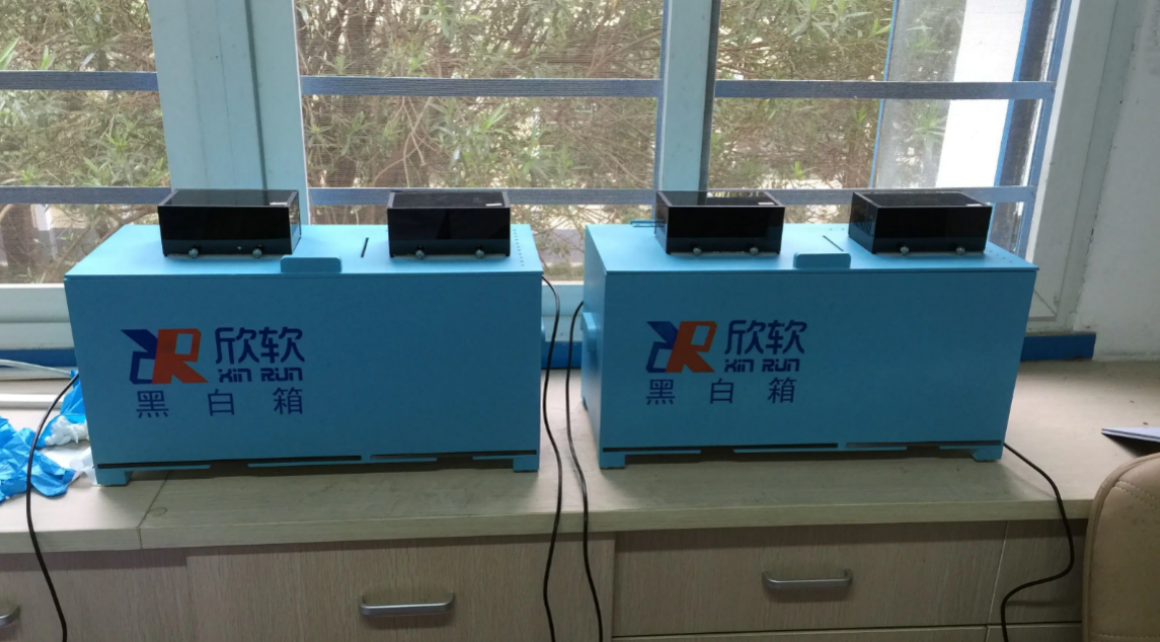
(5) Common Problems
1) Anti-anxiety agents can increase the number of times animals passing through the box and the residence time in the light box, while non anti-anxiety agents have no such effect.
2) In this model, the relative use intensity of anti-anxiety agents is consistent with the results of clinical trials.
3) Shimada's improved light-dark box experiment has good sensitivity. Whether it is a classical anti anxiety agent or anxiety causing agent, or a new anti anxiety agent such as buspirone, it shows positive results on this model.
Six. Conditioned Place Preference Experiment
(1) Experiment Principle
The combination of environmental stimuli and certain drugs as conditional reinforcement makes animals establish a connection between environmental stimuli and drugs and form operational behavior. Therefore, the reinforcement effect of matched drugs can be measured by observing the preference of animals for the matching environment. Conditional place preference experiment can go with various dependent drugs.
(2) Application Introduction
Conditioned place preference (CPP) experiment is a classical experimental model to evaluate drug mental dependence. It is also an effective tool widely used in looking for anti drug seeking behavior.
(3) Experiment Method
In this experiment, the experimental animals (rats and mice) are placed in the white observation area of the conditional place preference box and given psychodependent drugs (such as morphine), and then the activities of the experimental animals in the black area and white area of the conditional place preference box were observed. There are small doors between the white area, black area and gray area for animals to shuttle freely. Every time animals are in the administration area, they will have a positional preference for black and white areas under the action of drug reward effect, and its degree is related to the mental dependence of drugs.
(4) Case Display
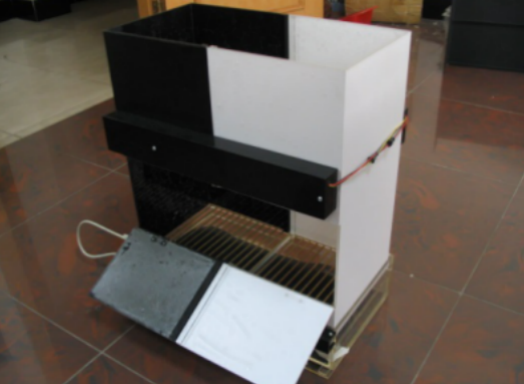
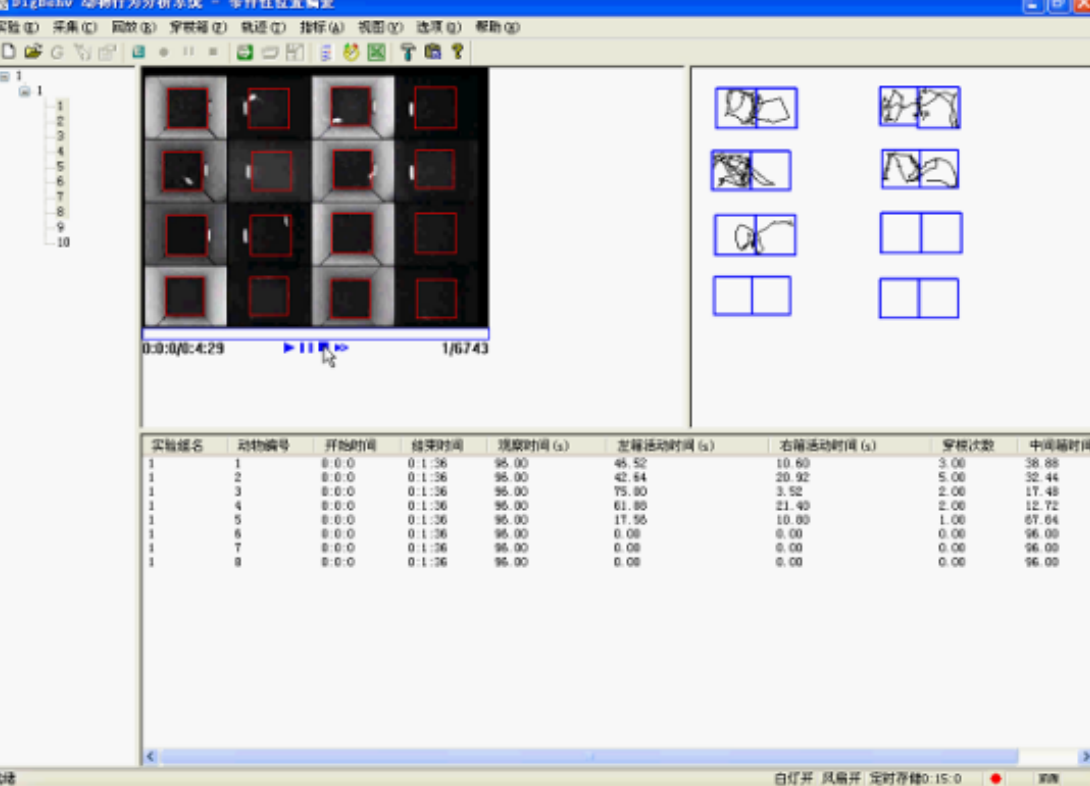
(5) Common Problems
① Fully touch the rats before the experiment, and the animals must fully adapt to the experimenter and the experimental environment without fear.
② If an animal falls to the ground, it is best to remove the animal.
③ Pay attention to controlling other interference factors in the experiment.
Seven. Social Interaction Behavior Test
(1) Experiment Principle
The design of animal communication experimental system is to detect the time when the mouse approaches the metal cage with another strange mouse in the experimental box after the mouse is familiar with the environment, so as to judge the social ability of the mouse. In the experiment, the time of mice close to the metal cage with familiar mice and the time of strange mice are usually compared to judge the social ability of animals.
(2) Application Introduction
The 3-chambered social test is the most commonly used experiment to evaluate the behavior of autism.
(3) Experiment Method
After the mice are familiar with the environment, the time when the mice approached the metal cage containing another strange mouse in the experimental box is detected to judge the social ability of the mice. In the experiment, the time of mice close to the metal cage with familiar mice and the time of strange mice are usually compared to judge the social ability of animals.
(4) Case Display
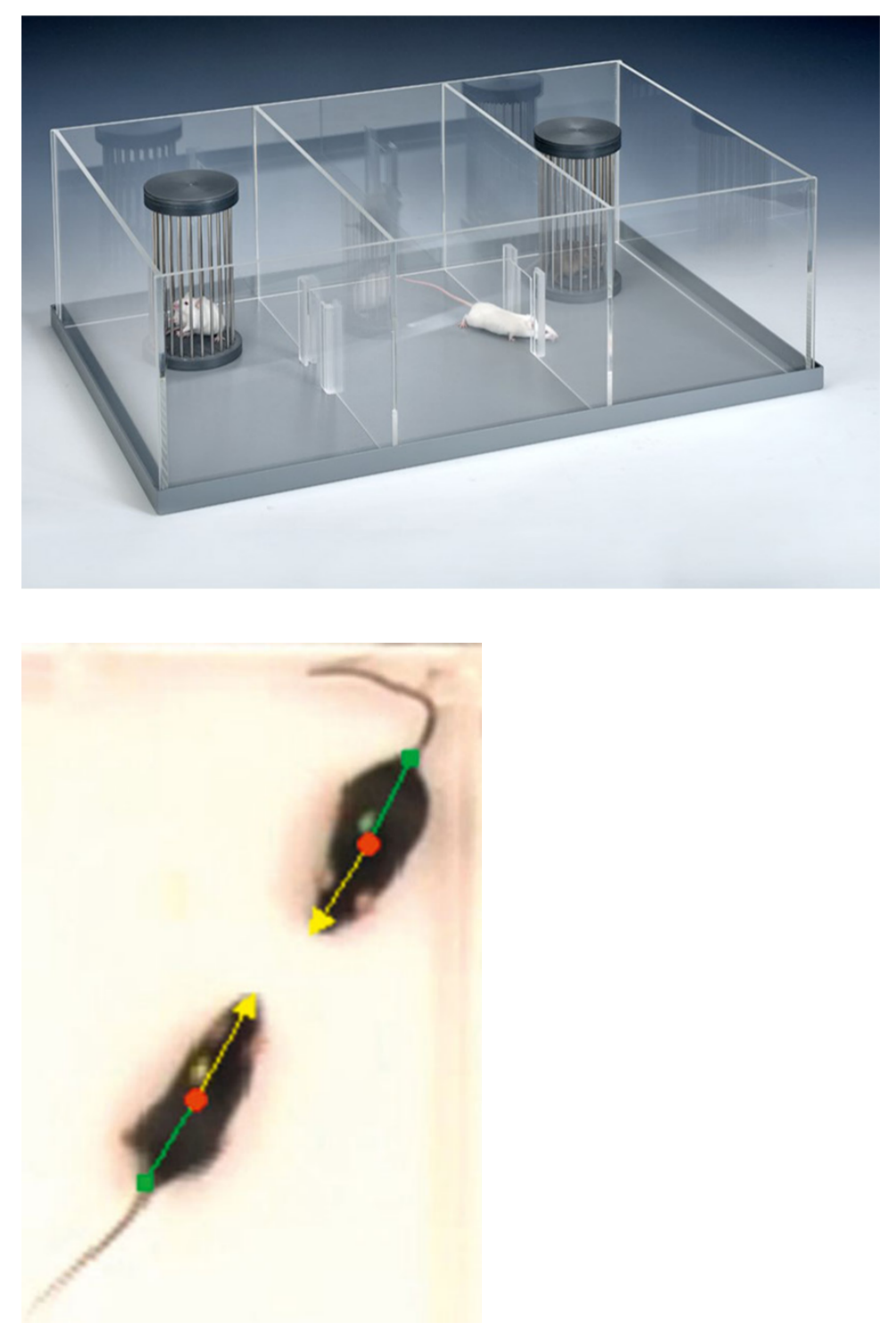
(5) Common Problems
① Fully touch the rats before the experiment, and the animals must fully adapt to the experimenter and the experimental environment without fear.
② If an animal falls to the ground, it is best to remove the animal.
③ Pay attention to controlling other interference factors in the experiment.
Eight. Hole-Board Test
(1) Experiment Principle
The experiment uses “curiosity” and “fear” to control the behavior of animals in the new environment, and uses “escape” to reflect the results of these two factors. The animal ' s head dipping reflects its novelty and desire to escape. It is generally believed that drugs increase the number and time of head-dipping without affecting the activity of animal movement, showing an anti-anxiety effect, and the reduction of the time and duration of head-dipping is an anxiety inducing effect.
(2) Application Introduction
Hole-board test is widely used in pharmacodynamics research.
(3) Experiment Method
The experimental devices for rats and mice are different. The device for rat is a 66cm x 56cm x 47cm wooden box with four bottom plates with a diameter of 3.8 cm and 1 cm deep equal large round holes, of which two holes are 14 cm from the nearest wall and the other two holes are 17 cm. The hole-board is raised horizontally by 12 cm; The mouse wooden box is 44cm x 40cm x 27cm, the pore diameter of the four holes is 3cm, and the thickness is 1.8cm, the distance between the center of each hole and the nearest wall is l0cm. After the 1980s, infrared photocells are installed on the wall of the hold-board box and around each hole and connected with the microcomputer. In this way, it can automatically record the number and duration of head-dipping, movement activity and standing number of animals at the same time, which not only improves the work efficiency, but also increases the reliability of the experiment. Male adult rats or mice are used in the experiment. Place the animal in the center of the hold-board with its back to the observer. When the two eyes of the animal disappear into the hole, it is a head dip. Record the times and duration of the head-dipping in 5-10min.
(4) Case Display
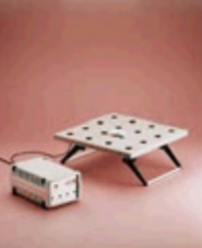
(5) Common Problems
① There is no unified standard for the shape and size of the hole-board box, but the square type is often used. Its side length is generally 60cm in rats and about 40cm in mice.
② The number of holes is mostly 16 in the early stage, and now 4-hole plates are usually used.
③ Animals often have more head-dip in the morning than in the afternoon. Therefore, we should try to do the experiment at a fixed time every day.
④ In this experiment, the specificity of exploratory head-dip caused by anxiety causing drugs (such as BDZ receptor inverse agonist) is relatively consistent, while some drugs lacking anti anxiety effect (such as BDZ receptor antagonist flumazenil) can increase exploratory head-dip. Therefore, the screening of unknown drugs should be evaluated in combination with other anxiety models.
Nine. High Plus Maze
(1) Experiment Principle
High plus maze is to investigate the anxiety state of animals by using the contradictory and conflicting behavior formed by the exploration characteristics of animals to new and different environments and the fear of hanging open arms .
The high plus maze has a pair of open arms and a pair of closed arms. Rodents tend to move in the closed arms due to their dark preference, but they will move in the open arms due to curiosity and exploration characteristic. When facing novel stimuli, animals have the impulse and fear of exploration at the same time, which leads to the conflict between exploration and avoidance, resulting in anxiety. Using anti-anxiety drug can evidently increase the time and duration of entering the open arms. The high plus maze is higher from the ground, which is equivalent to people standing on a cliff, making the subjects have fear and anxiety.
(2) Application Introduction
High plus maze is widely used in the fields of science research and computer assisted instruction in many disciplines such as new drug development, screening, evaluation, pharmacology, toxicology, preventive medicine, neurobiology, animal psychology and behavioral biology. It is a classic experiment to carry out behavioral research, especially anxiety and depression research.
(3) Experiment Method
At the beginning of the experiment, put the mice into the maze from the central grid facing to the closed arm and record the activities within 5 minutes. The observation indexes include: the number of entering the open arm (two anterior melons must enter the arm), the residence time in open arm, the number of entering the closed arms, and the residence time of closed arm. Calculate the proportion of open arm residence time, the proportion of open arm entry times, and the total entry times in the high plus maze. After the experiment, take out the mice, clean the two arms, and spray alcohol to remove the smell. Finally, use xeye animal behavior software to analyze the data.
(4) Case Display
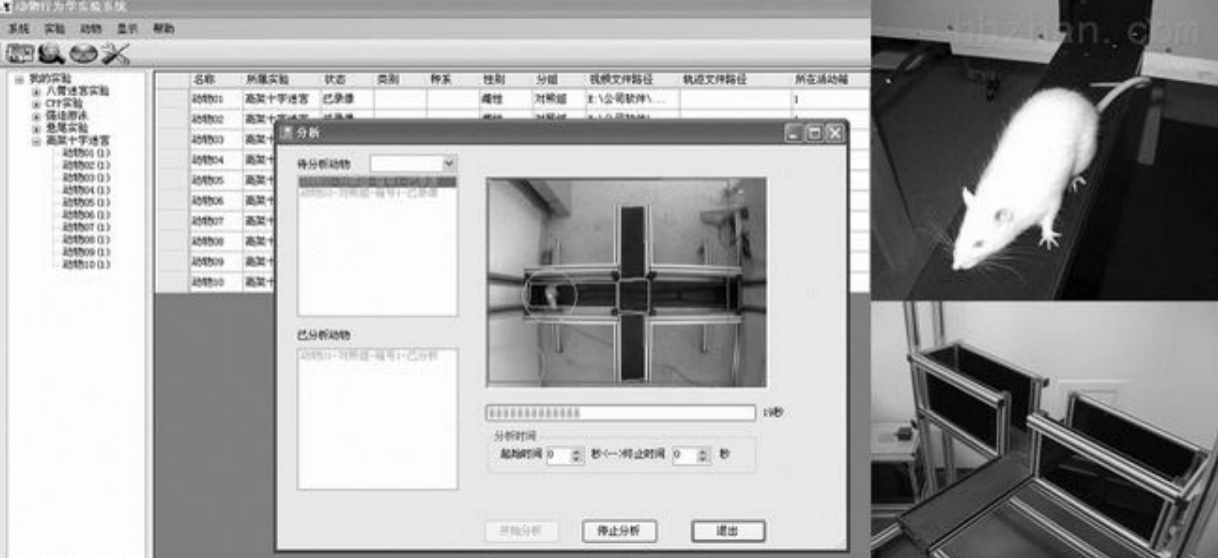
(5) Common Problems
① Fully touch the rats before the experiment, and the animals must fully adapt to the experimenter and the experimental environment without fear.
② If an animal falls to the ground, it is best to remove the animal.
③ Pay attention to controlling other interference factors in the experiment.
Service Process
